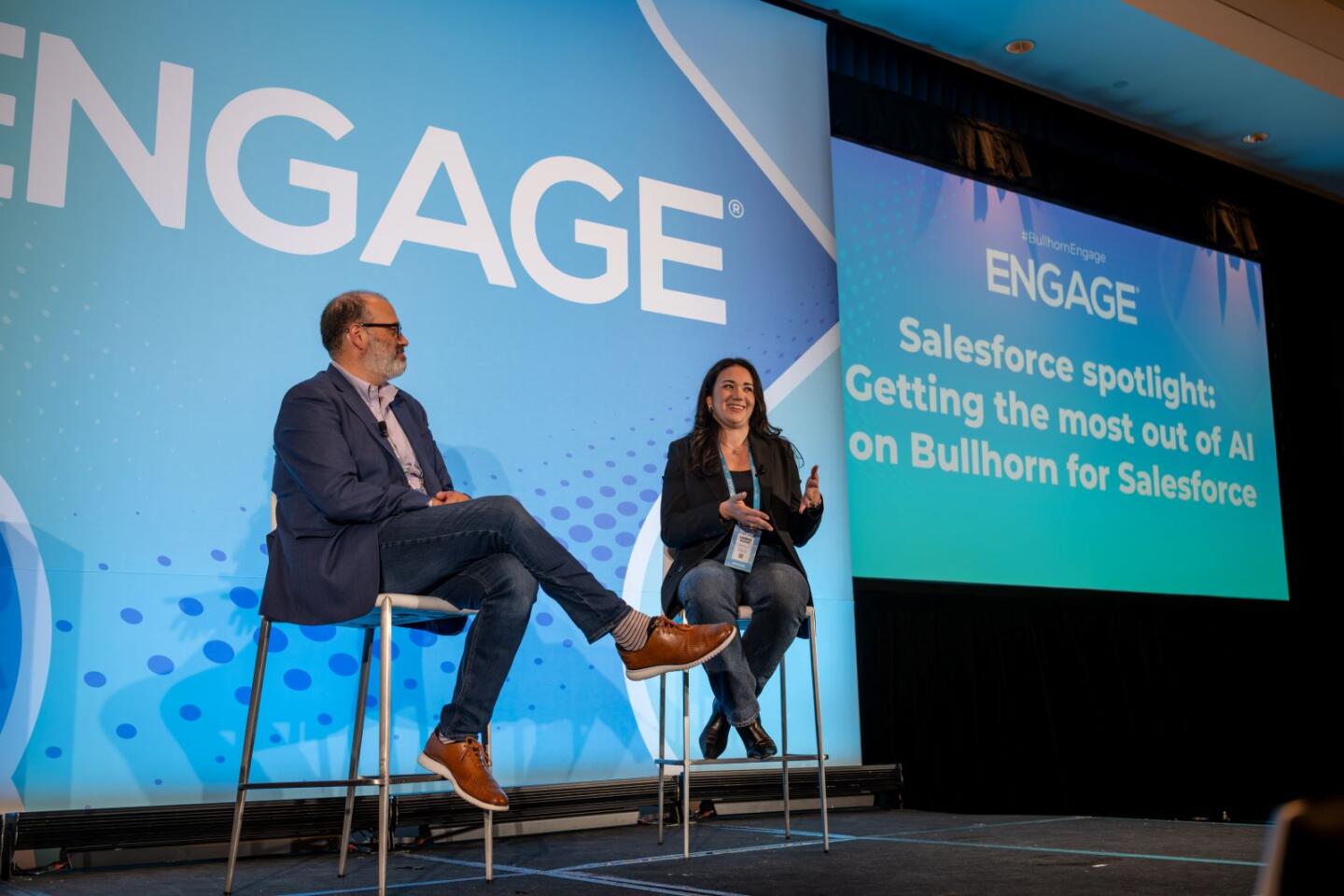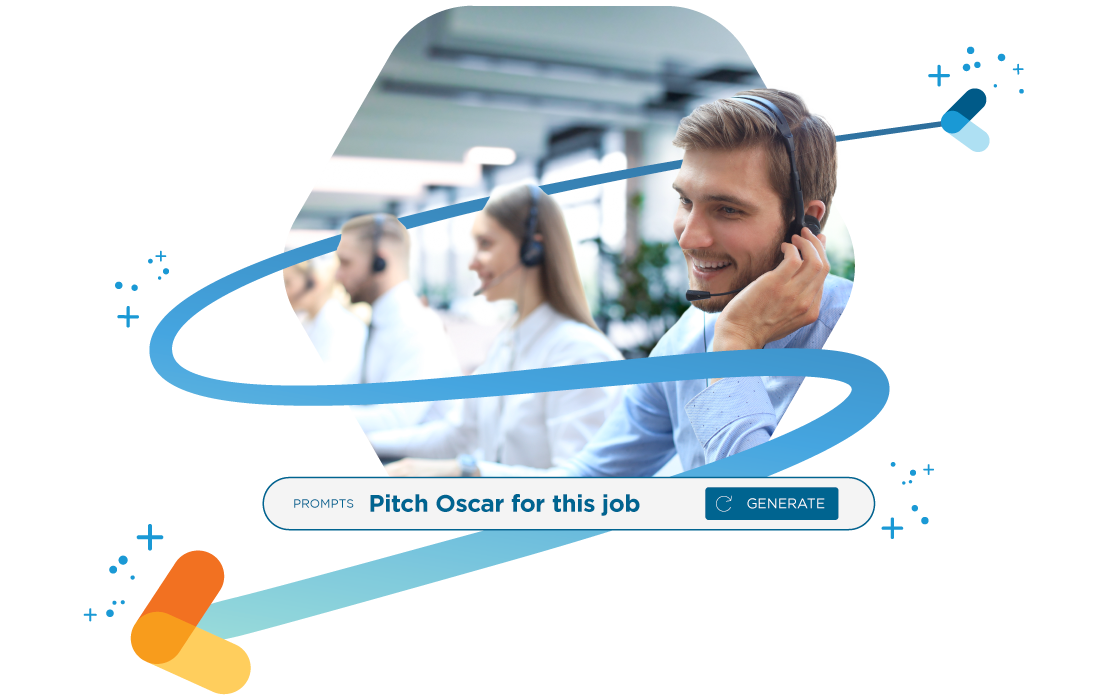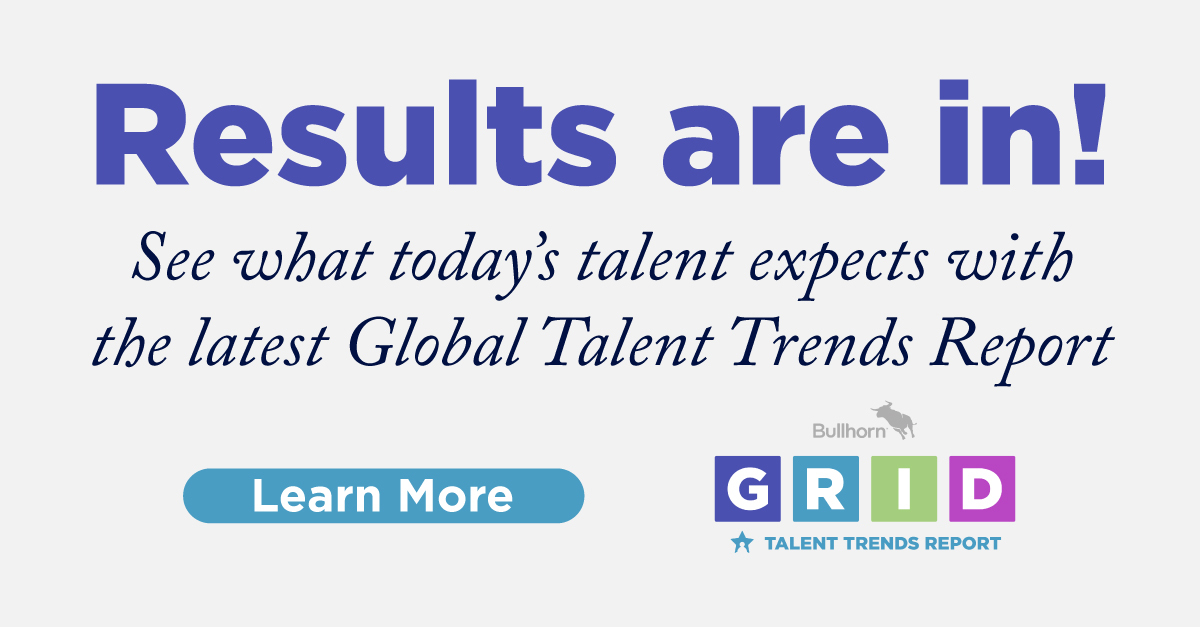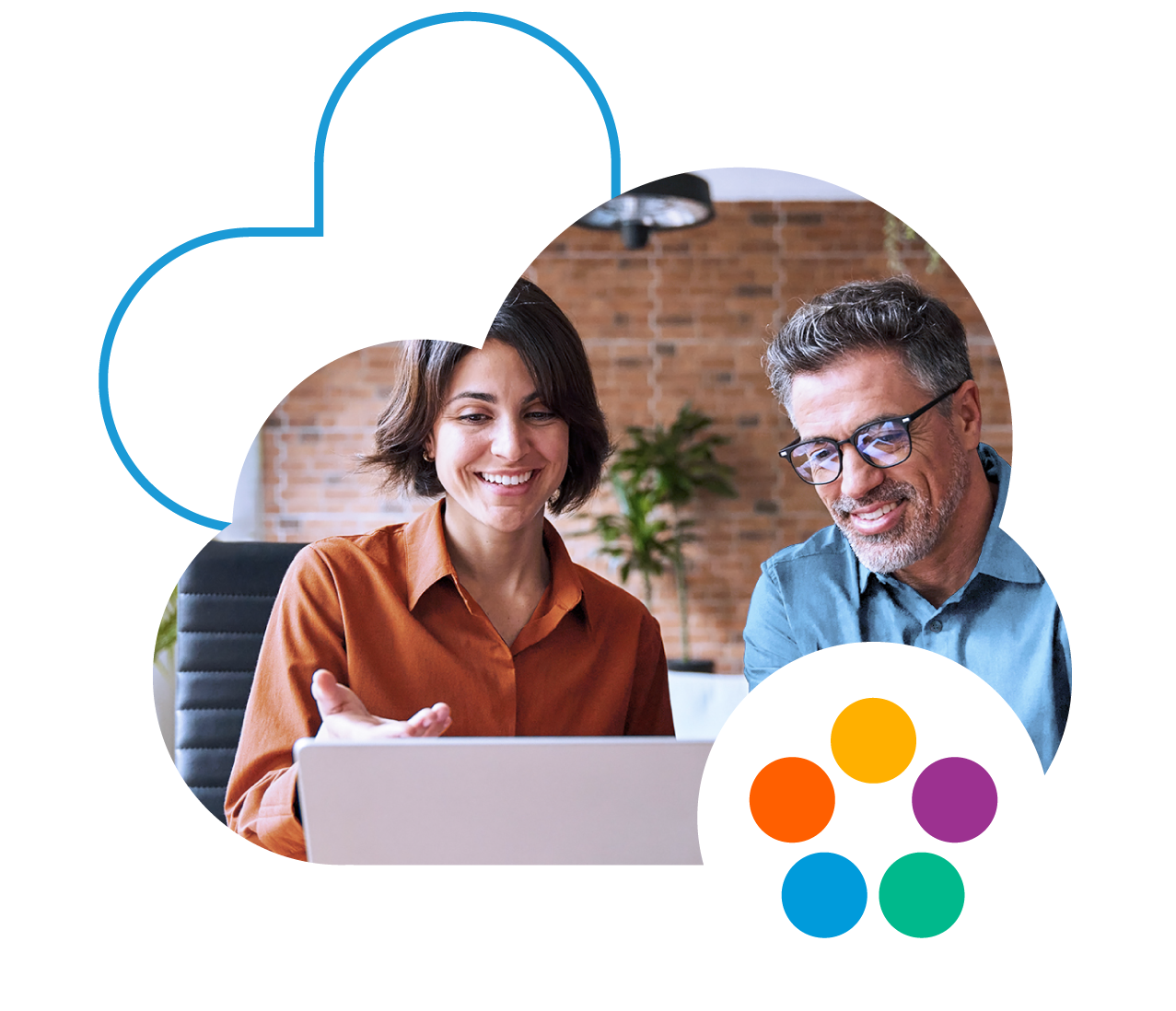Salesforce Spotlight: Getting the most out of AI on Bullhorn for Salesforce

AI—it seems to be the main topic on everyone’s mind in the industry this summer. Ready to become an expert on all things AI in your organisation? We’ve got you covered.
At our most recent Engage Boston, we gathered two of the industry’s most knowledgeable leaders with deep insights about the development of AI on Salesforce—and where it’s going. Whether you’re interested in making the platform work for your unique goals or focused on future-proofing for the inevitable next wave of change, this expansive conversation will give you a master class on AI for the recruitment industry.
Read on for tips and tricks from Lindsey Ohayon, Director Business Development and Strategy, Salesforce and Joshua Pines, VP, Product Marketing, Bullhorn on how to:
- Get the most out of Salesforce with an AI perspective on the platform
- Understand integration with Bullhorn’s AI capabilities
- Prepare your organisation for future AI-driven capabilities from Bullhorn
Leverage the power of AI using Salesforce
While industry players may be familiar with consumer applications of AI, it’s important to contextualize the capabilities of the Salesforce platform. Years ago, Salesforce introduced the Einstein platform to leverage predictive and proactive insights for customers and introduced a generative wave of AI technology with Salesforce GPT in 2023. While ChatGPT is powered by a public data model, trusted customer data shouldn’t sit in a public domain, as used by ChatGPT in 2024.
Trust is key, explains Ohayon. “With that kind of trust in mind, we started approaching that generative AI path we’ve been on for the last couple of years.” The process started with an inquiry into how the platform could connect all of our customers’ data sources in a trusted way. Ohayon elaborates: “Break down those data silos, unblock those data islands to realise a cohesive way to view your customers’ information in a trusted manner, and activate AI use cases, and the way we’ve done that is through the Einstein One platform.”
The core differentiator? Einstein One combines Data Cloud and multiple Customer 360 apps, such as Sales, Service, Marketing, and Commerce Clouds, to activate AI experiences. The platform offers predictive AI capabilities such as recommended shopping experiences on Commerce Cloud, bots to support agents, and sales tools, including Service Cloud and Forecasting.
Meanwhile, Einstein Copilot, the generative AI source, is a conversational AI tool that operates across all of an organisation’s CRM applications. Speak to it naturally, and the platform takes action.
Customisation = competitive edge
“It’s not enough to just provide you AI capabilities,” says Ohayon, elaborating on the development of the innovation, “but with Einstein One studio, you can customise what that AI does for you and your business.” The realisation of tailor-made capabilities allows stakeholders to elevate from the competitive noise of the marketplace, building their own capabilities by developing custom prompts and Copilot actions, all supported, explains Ohayon, “by the Einstein trust layer, which means we have a zero-retention policy. None of your customer data that exists in your Salesforce orgs will end up being retained by a public LLM.”
Lay a foundation for innovation
For industry leaders who are focused on future-proofing their organisations, Copilot offers capabilities and extensions that support the march towards adopting and optimising the adoption of AI. Because Einstein One incorporates Data Cloud and Customer 360 apps, it’s a more trusted resource across multiple categories, offering a unified view of your customers.
As Ohayon explains, “You’re not actually moving data platform to platform, but with our integration, you can leverage it as if it lives natively on either platform. So now once you have all of that data accessible on Salesforce, you truly are ready to activate those AI experiences because you have that real, true, unified view of your customer.”
The power of platform-native partnership
Let’s say you want to automate a creative flow to send a trigger to a certain candidate via email and have AI do that based on real-time transcription from a call that you had with them. As a Salesforce customer, you’re now empowered to set that in motion with data cloud connectivity. You have a suite of functionality, based on good, trusted data, that empowers or accelerates what AI can do for your company.
The key is enriching day-to-day workflow. “We want the intelligence that AI provides to be within that flow of work,” urges Ohayon. “It’s not just what actions you can take, but how you and your customers operate day to day.”
Drive behavior focused on high-value activities
Everyone knows the pain points of conversing with bots, where there is no point of connection between a chatbot and a support agent. With AI, companies can tap into the power of the data cloud and leverage that single source of truth to summarise a customer’s previous interactions across multiple touchpoints, all so your users can provide customers with a continuous experience.
Customers can benefit from Salesforce learnings to drive more interesting, valuable functionality. For example, many customers on the Salesforce platform run a contact center business within their business to manage client issues. Adoption of Service Cloud amongst clients is a great use case that we’re seeing amongst clients that have a separate call center to handle client issues in the moment using cases.
When users are freed from manual tasks, they can focus on higher-value activities—building relationships with clients and candidates or developing existing relationships within your pools.
The roadmap to leveraging AI in the future
Looking ahead at the conversations in Salesforce’s boardrooms around the biggest questions driving innovation in the next six, twelve, or 24 months, many customers are reeling from being asked to do more with less. “I think there’s also an interesting kind of twist that we’ve started to make in speaking about AI,” shares Ohayon. “It’s not just how certain tasks can be replaced by AI, but how we work more efficiently with AI to spend more time with our customers.”
Rather than simply replacing tasks, use the platforms to enrich customer interactions to drive revenue retention rate and customer success. “Instead of feeling like my job is going to be replaced by AI, which is certainly not where we’re heading, use AI for good. Make your job and make your day that much more enriched, that much more informed.”
Want more insights from Engage Boston? Check out the Content Hub for keynote videos, recaps, and more!


 Bullhorn’s marketplace of 100+ pre-integrated technology partners gives recruitment agencies the tools they need to build a unique, future-proof solution.
Bullhorn’s marketplace of 100+ pre-integrated technology partners gives recruitment agencies the tools they need to build a unique, future-proof solution.